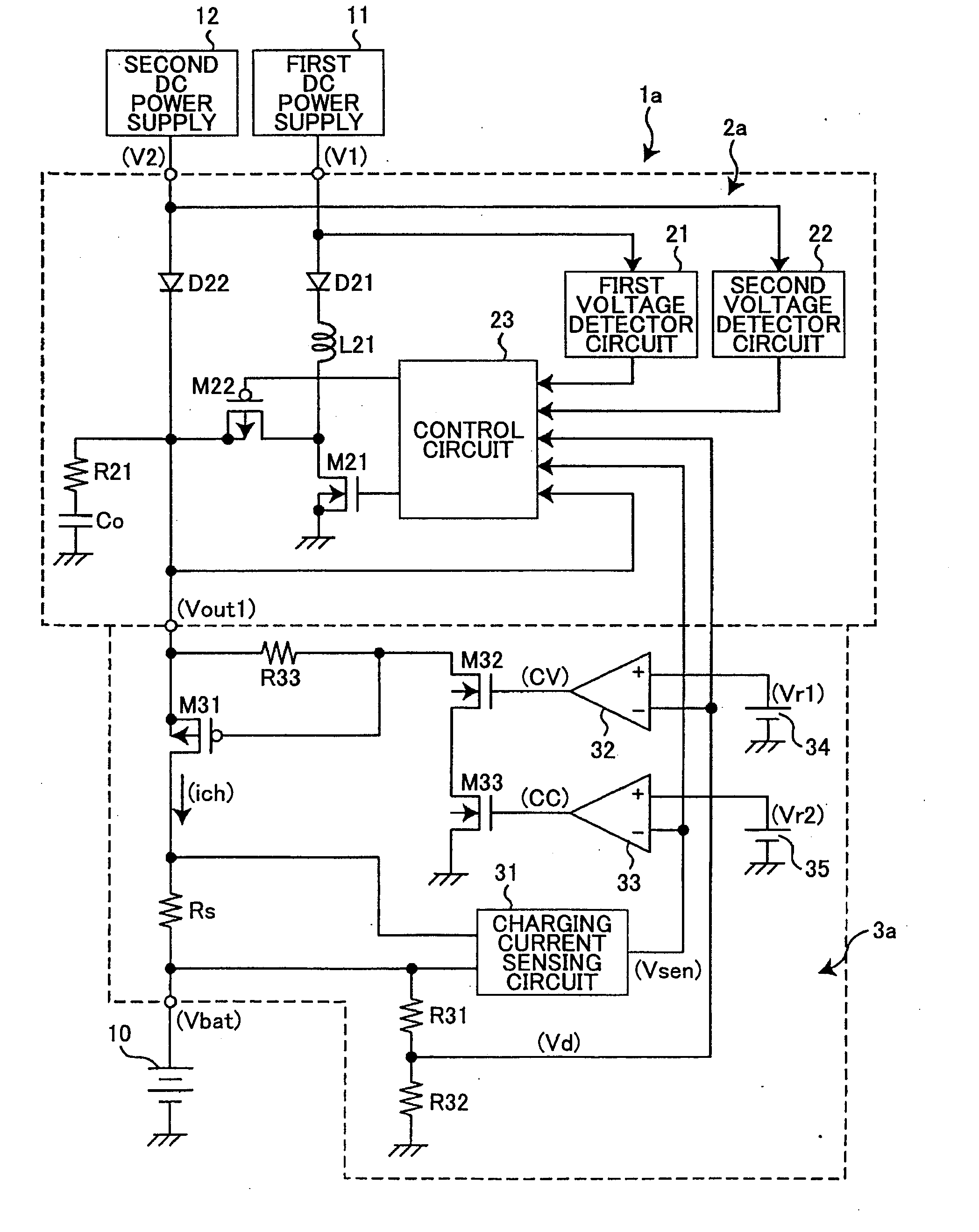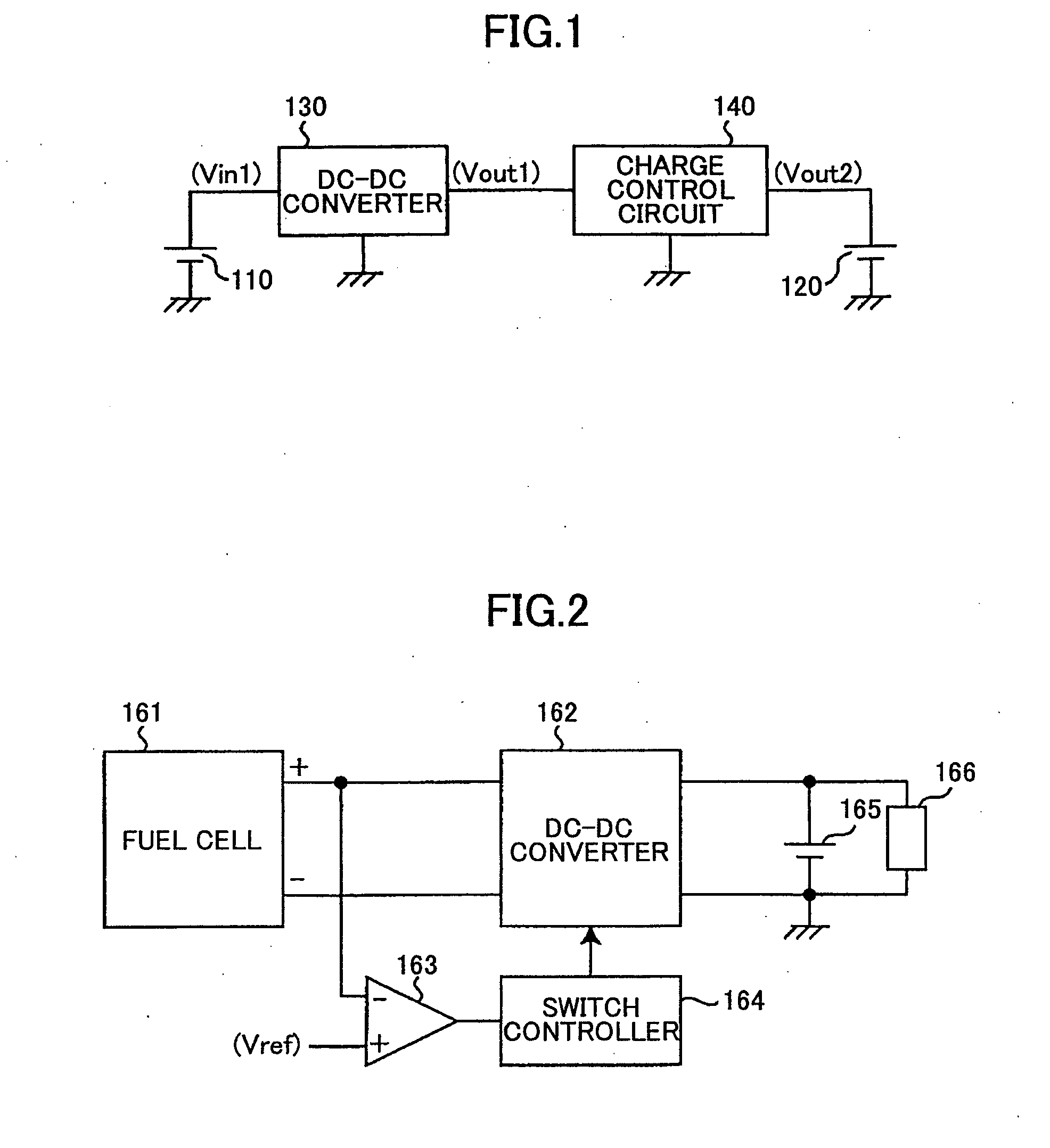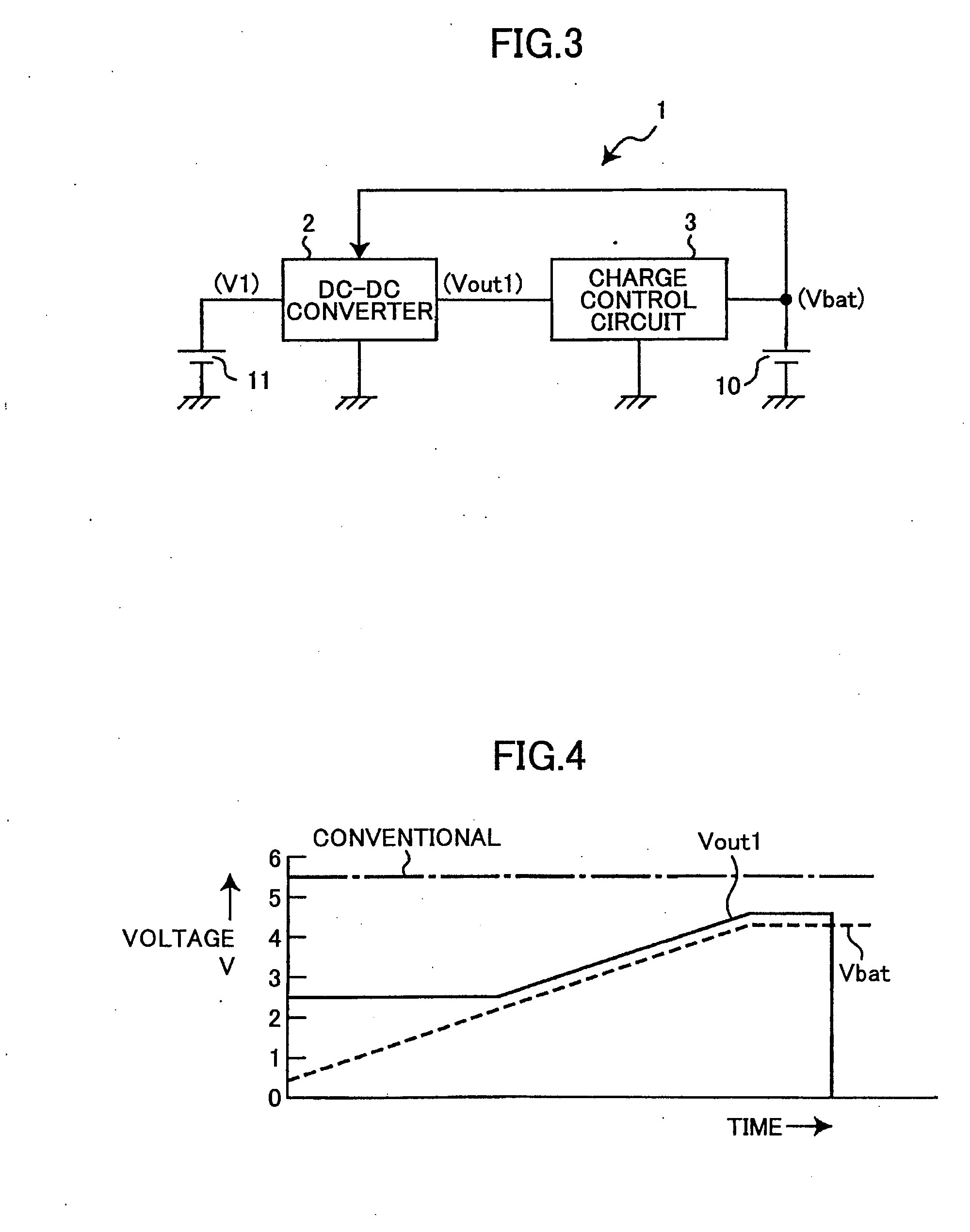Power supply circuit, charging unit having the power supply circuit, and power supply method
- Summary
- Abstract
- Description
- Claims
- Application Information
AI Technical Summary
Benefits of technology
Problems solved by technology
Method used
Image
Examples
first embodiment
[0028]FIG. 3 is a schematic block diagram showing a charging unit 1 according to a first embodiment of the present invention.
[0029]Referring to FIG. 3, the charging unit 1, which charges a secondary battery 10 such as a lithium-ion battery, includes a DC-DC converter 2 such as a step-up switching regulator, a charge control circuit 3 that performs predetermined constant-current, constant-voltage charging on the secondary battery 10 using an output voltage Vout 1 output from the DC-DC converter 2, and a first direct-current (DC) power supply 11 formed of a battery such as a fuel cell or a solar battery. Hereinafter, the term “fuel cell” may also refer to a stack of fuel cells.
[0030]A first voltage V1 is input to the DC-DC converter 2 from the first DC power supply 11. The DC-DC converter 2 increases the first voltage V1 so that the first voltage V1 is proportional to a battery voltage Vbat, for example, greater than the battery voltage Vbat by a predetermined value, and outputs the i...
second embodiment
[0038]In the first embodiment, power is supplied to the DC-DC converter 2 only from the first DC power supply 11. Alternatively, according to a second embodiment of the present invention, power may be supplied from two DC current sources, that is, a first DC current source and a second DC current source, to the DC-DC converter, and the supply voltage from the first DC power supply may be increased and supplied to a charge control circuit when the supply voltage from the second DC power supply becomes lower than a predetermined value.
[0039]FIG. 5 is a circuit diagram showing a charging unit 1a according to the second embodiment of the present invention. In FIG. 5, the same elements as those of FIG. 3 are referred to by the same reference numerals.
[0040]Referring to FIG. 5, the charging unit 1a, which charges the secondary battery 10 such as a lithium-ion battery, includes a DC-DC converter 2a forming a step-up switching regulator, a charge control circuit 3a that performs predetermin...
third embodiment
[0059]In the above-described second embodiment, the DC-DC converter 2a does not perform output control of the second voltage V2 and only controls the operation of increasing the first voltage V1. Alternatively, according to a third embodiment of the present invention, the DC-DC converter may control output of the second voltage V2 to the charge control circuit 3a in accordance with the value of the second voltage V2.
[0060]FIG. 6 is a circuit diagram showing a charging unit 1b according to the third embodiment of the present invention. In FIG. 6, the same elements as those of FIG. 5 are referred to by the same reference numerals, and a description thereof is omitted.
[0061]There is a difference between FIGS. 5 and 6 in that a PMOS transistor M41 that controls output of the second voltage V2 to the charge control circuit 3a in accordance with the detection result of the second voltage V2 by the second voltage detector circuit 22 is added in FIG. 6.
[0062]Referring to FIG. 6, the chargin...
PUM
 Login to View More
Login to View More Abstract
Description
Claims
Application Information
 Login to View More
Login to View More - Generate Ideas
- Intellectual Property
- Life Sciences
- Materials
- Tech Scout
- Unparalleled Data Quality
- Higher Quality Content
- 60% Fewer Hallucinations
Browse by: Latest US Patents, China's latest patents, Technical Efficacy Thesaurus, Application Domain, Technology Topic, Popular Technical Reports.
© 2025 PatSnap. All rights reserved.Legal|Privacy policy|Modern Slavery Act Transparency Statement|Sitemap|About US| Contact US: help@patsnap.com



